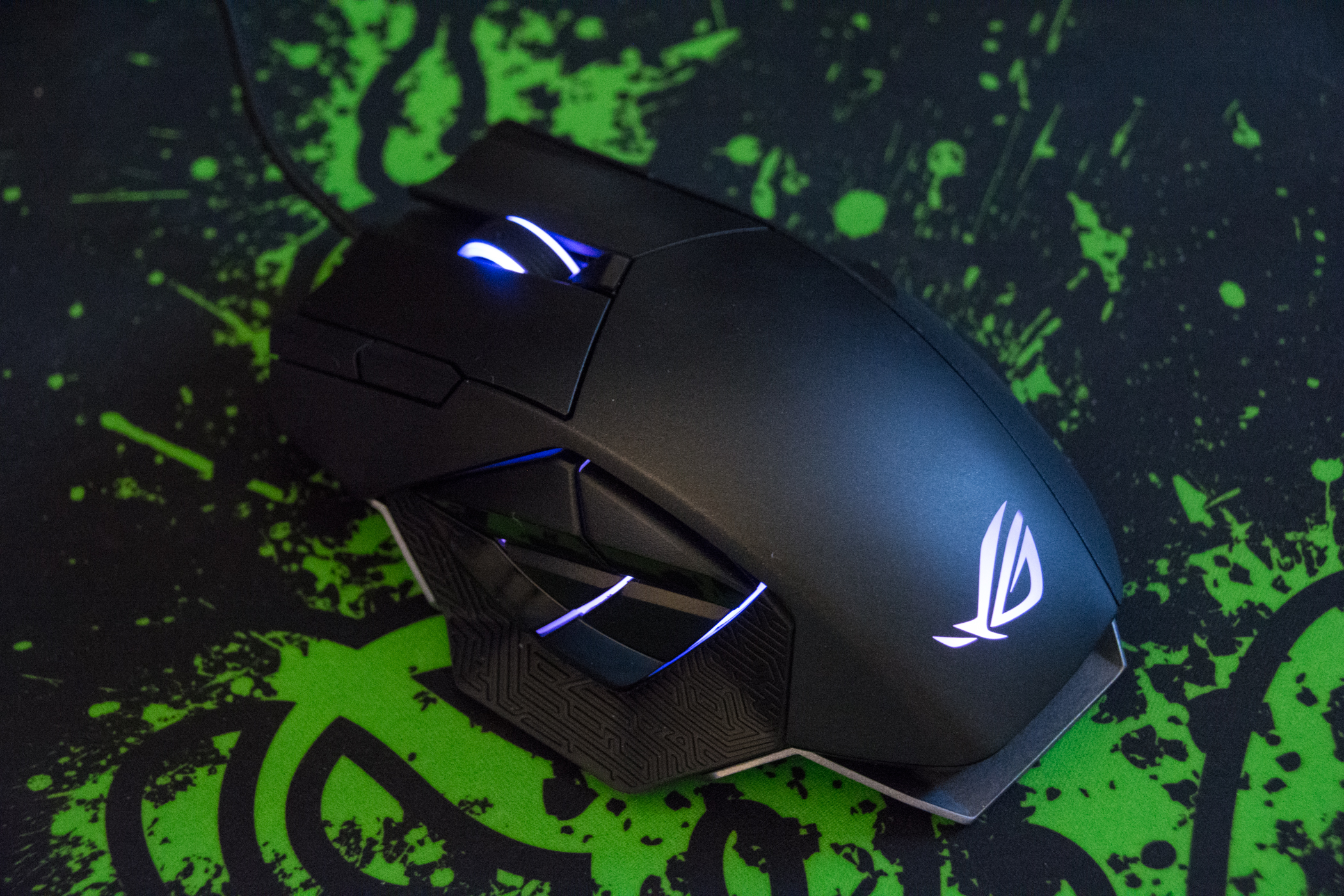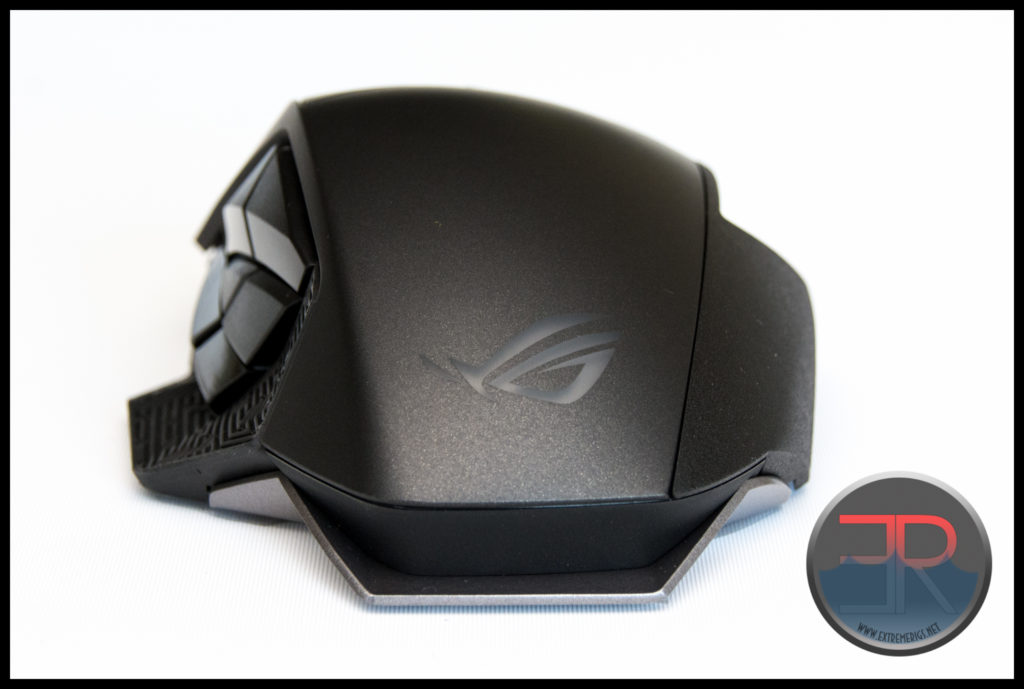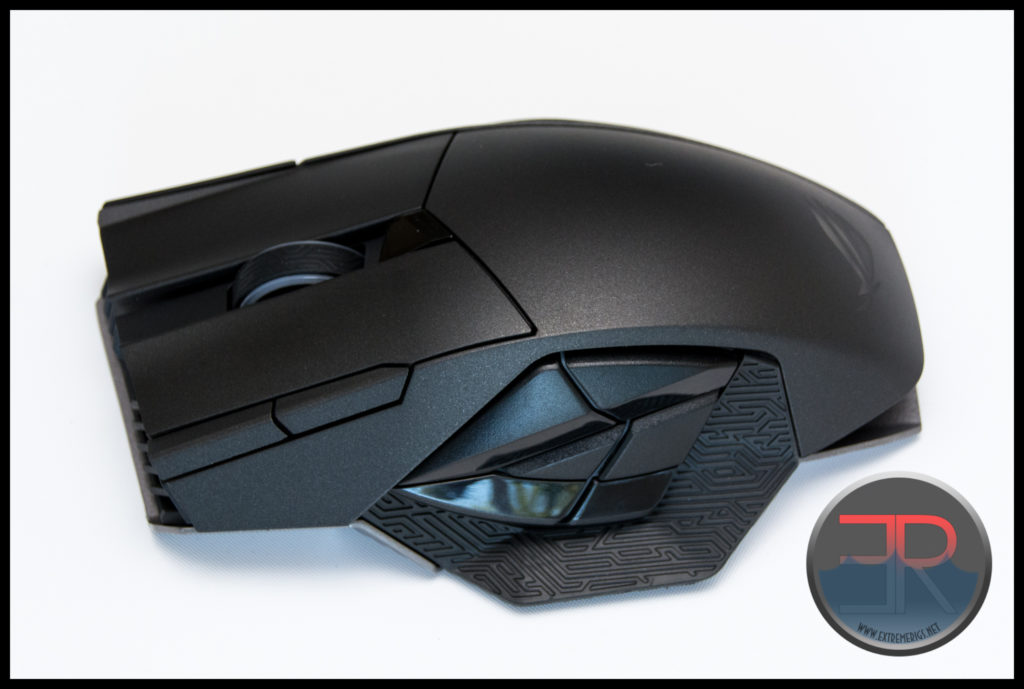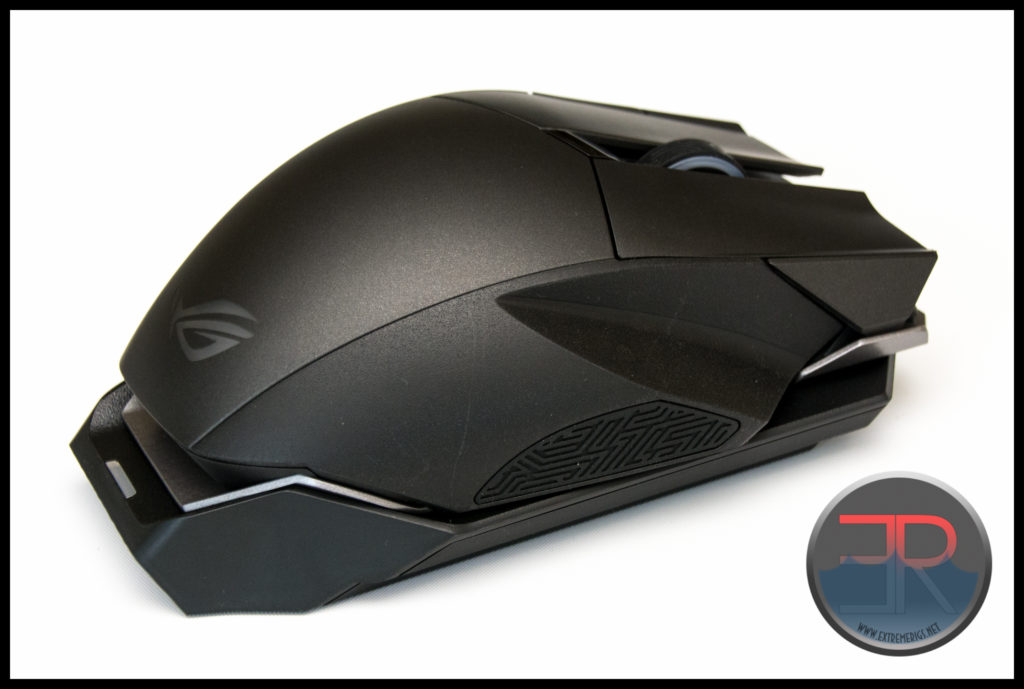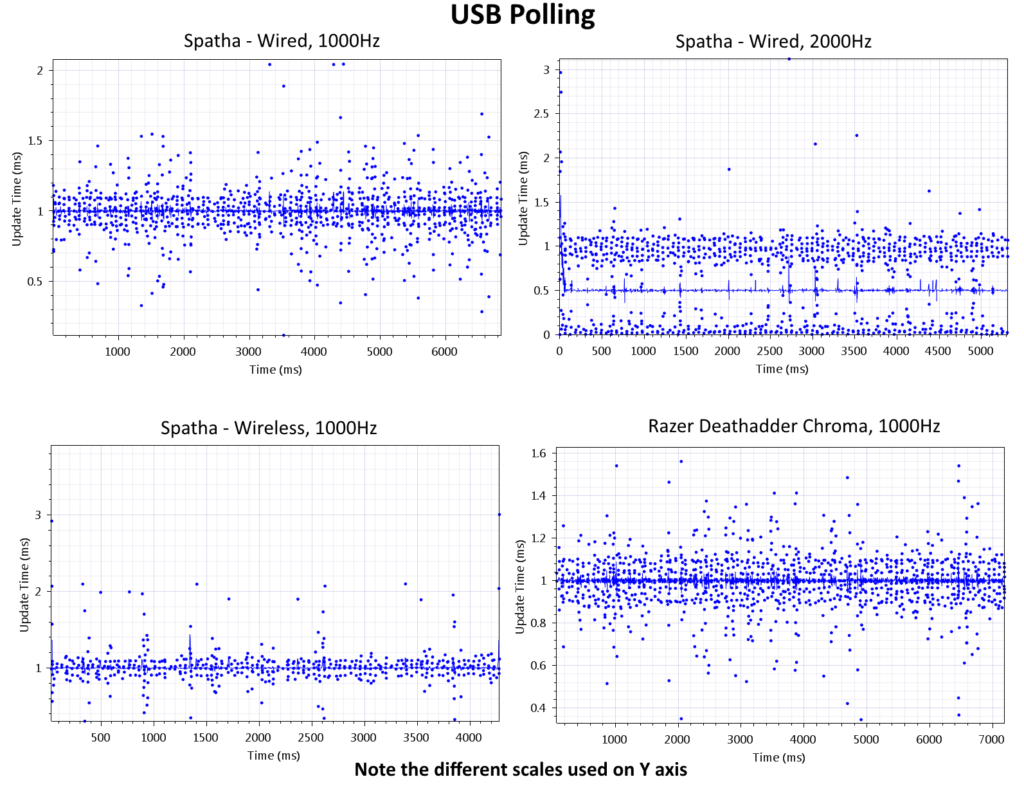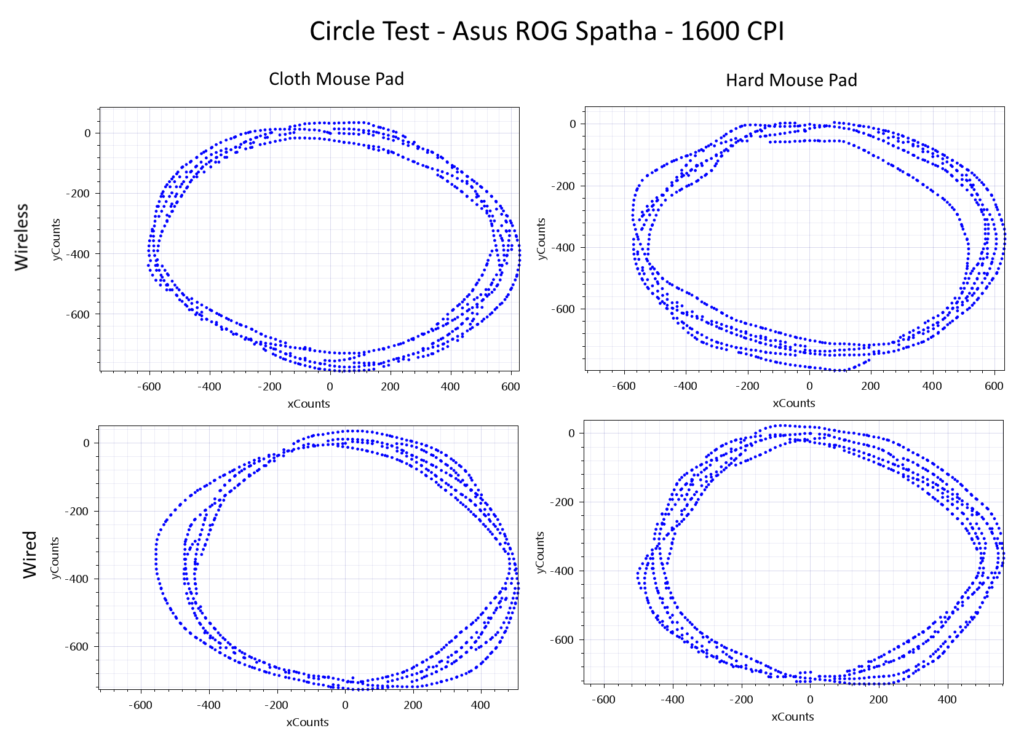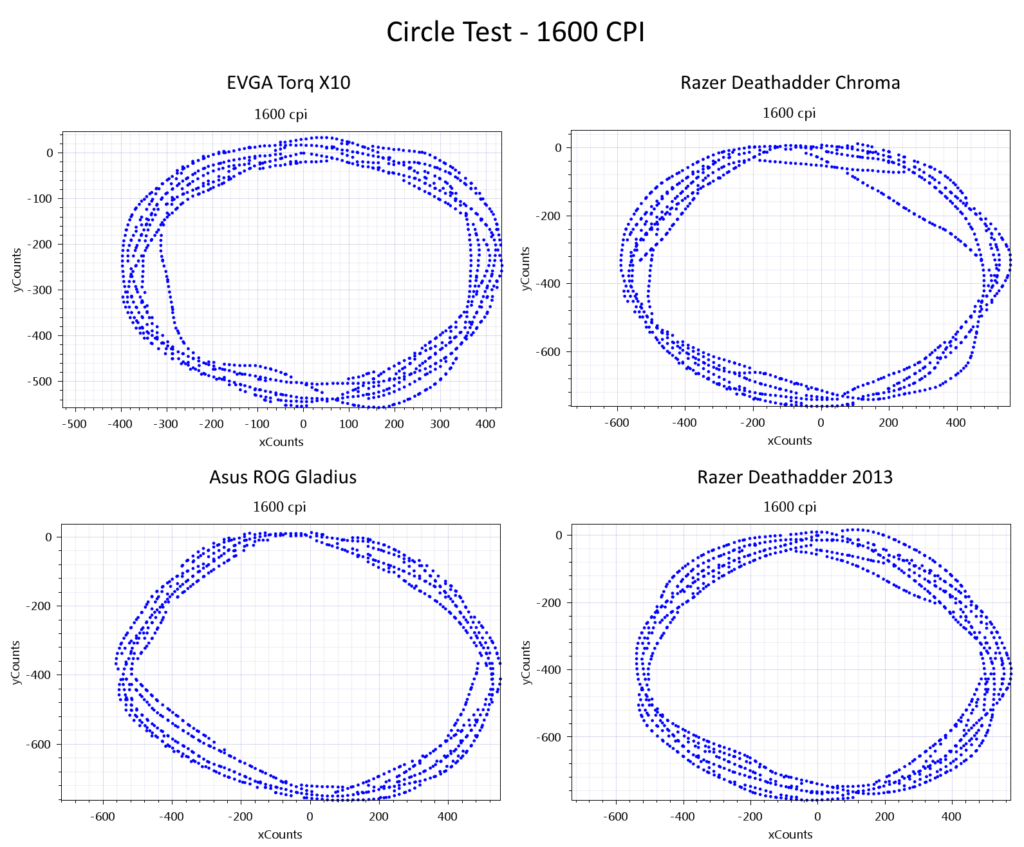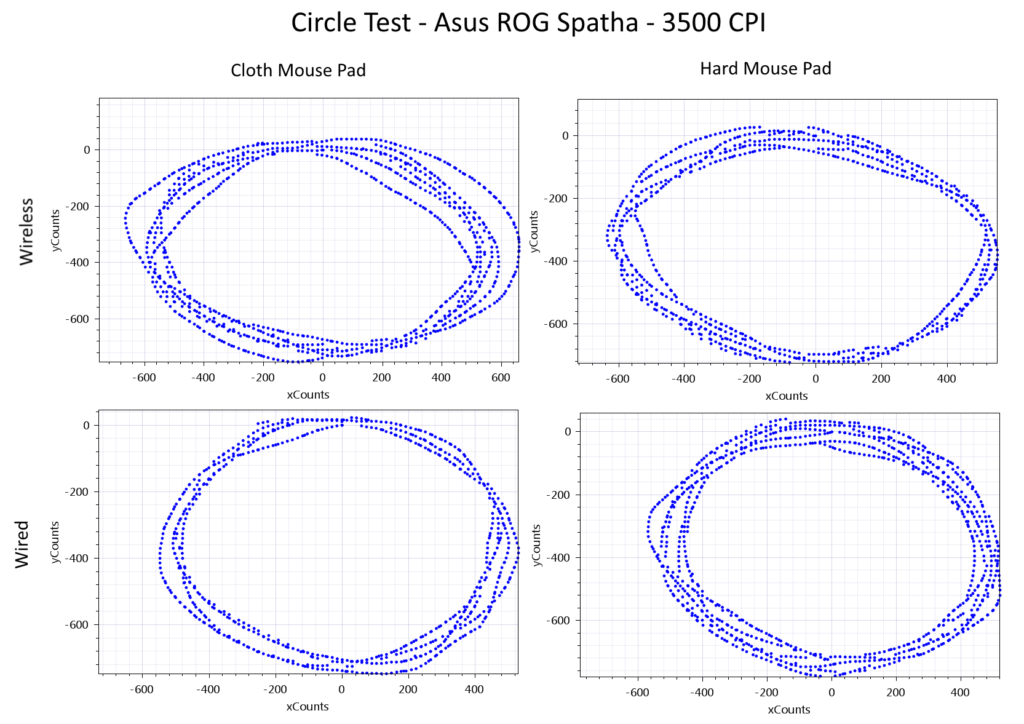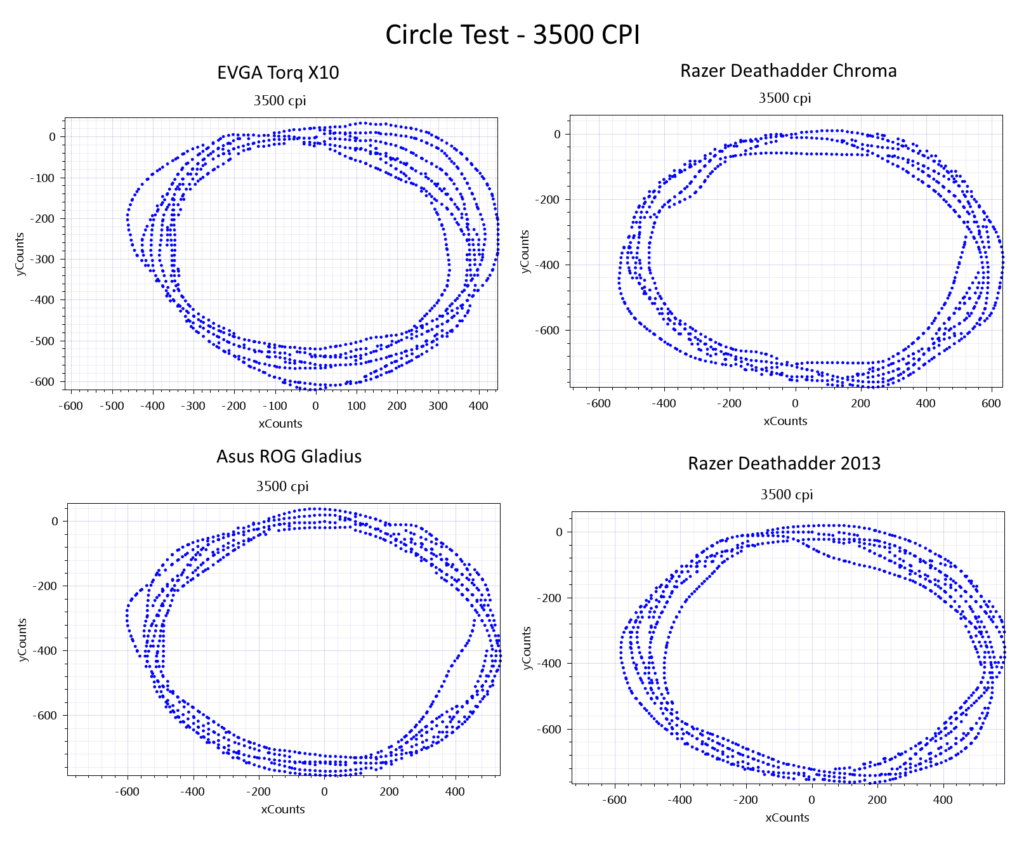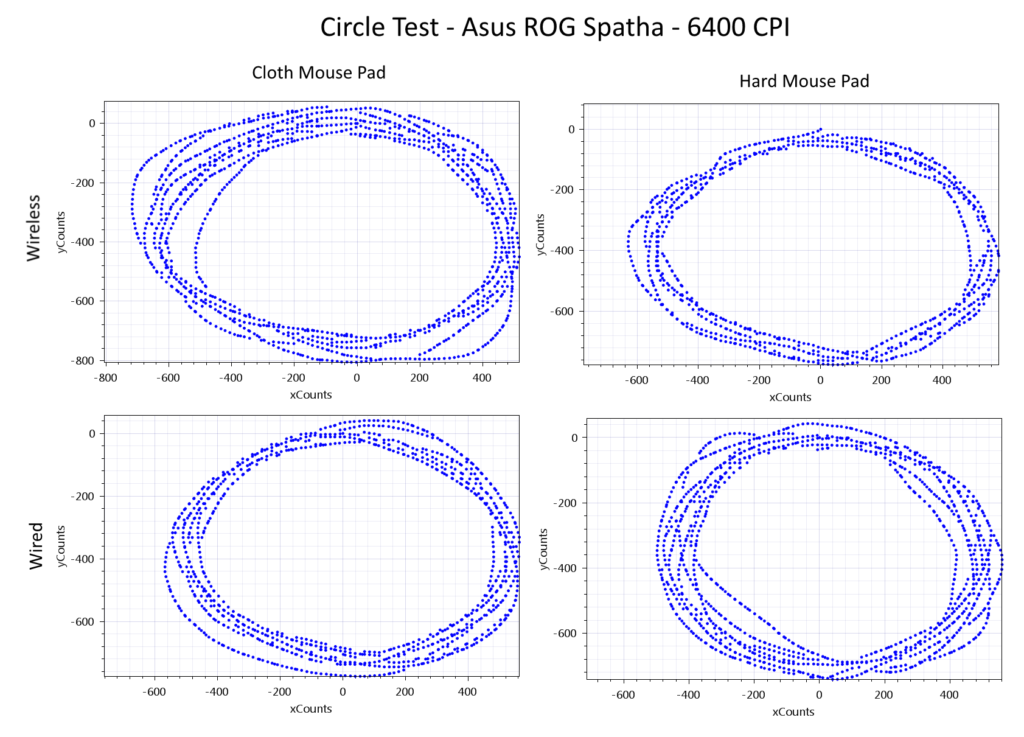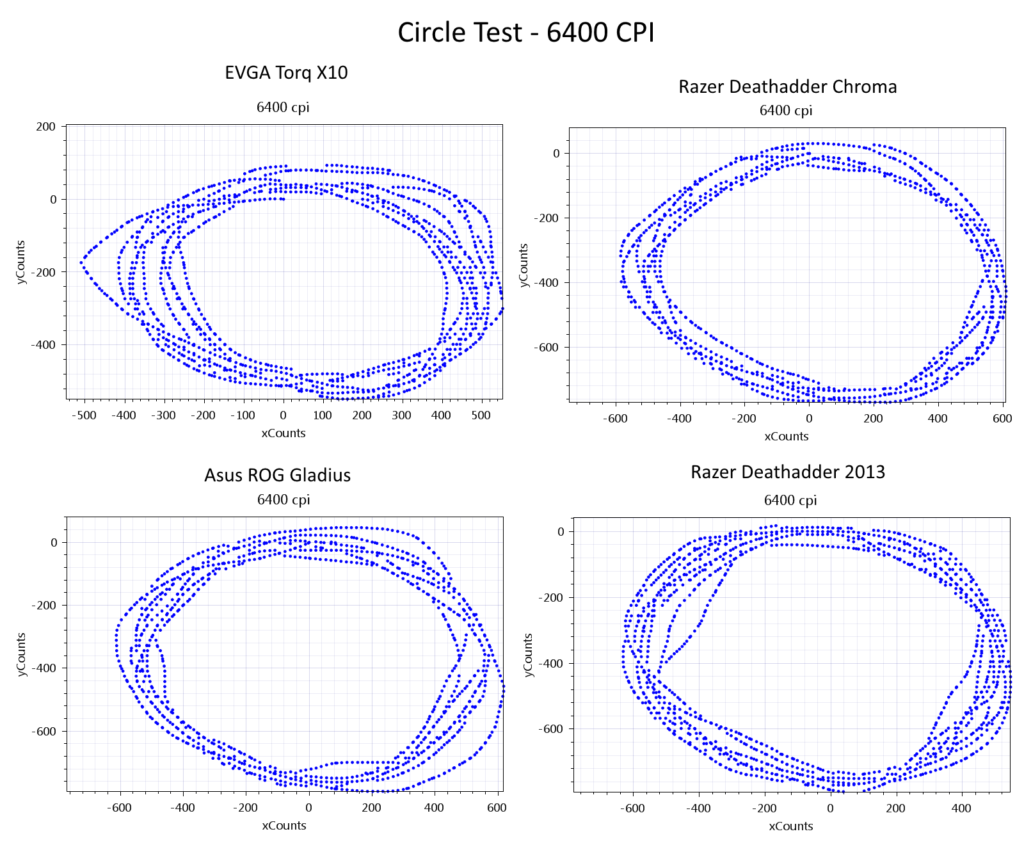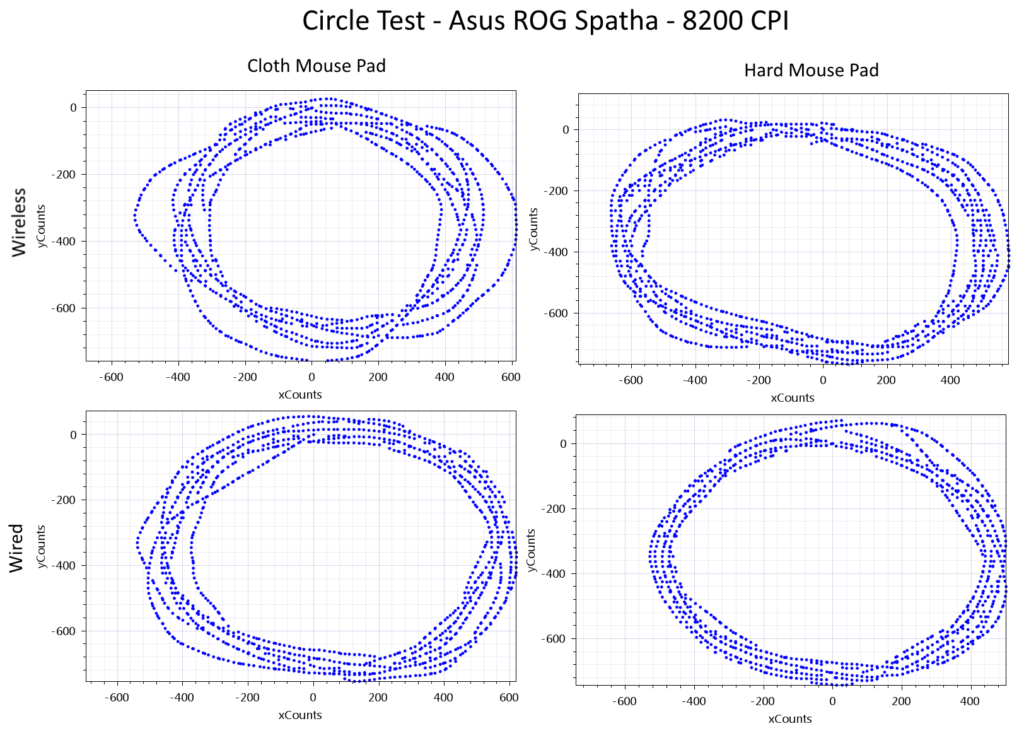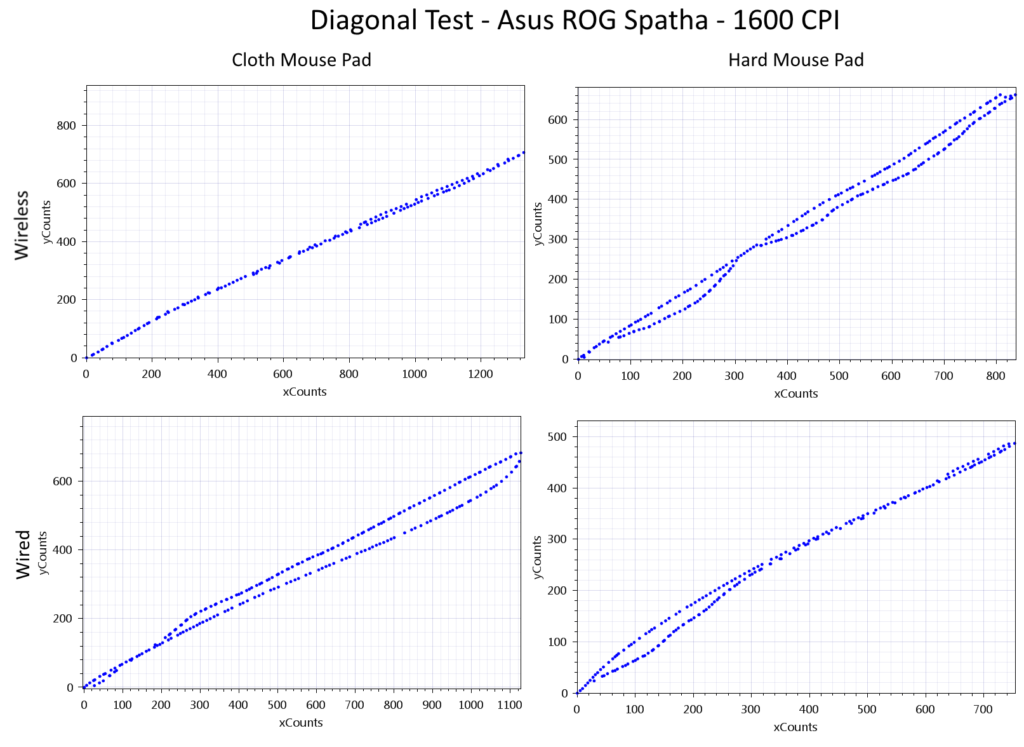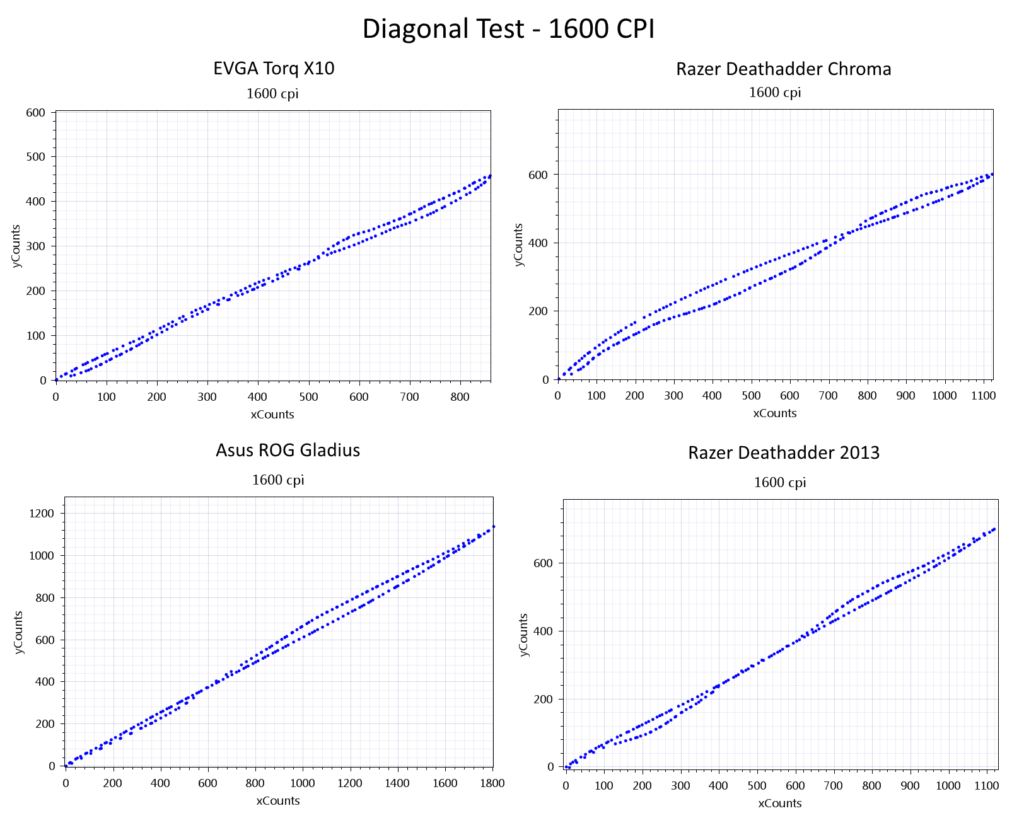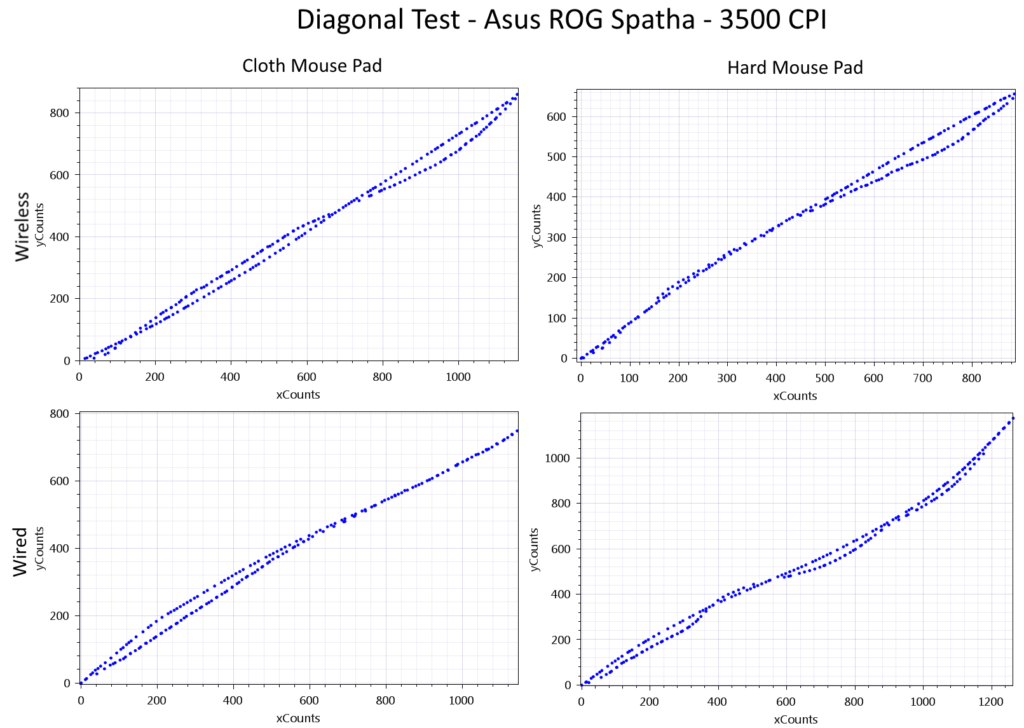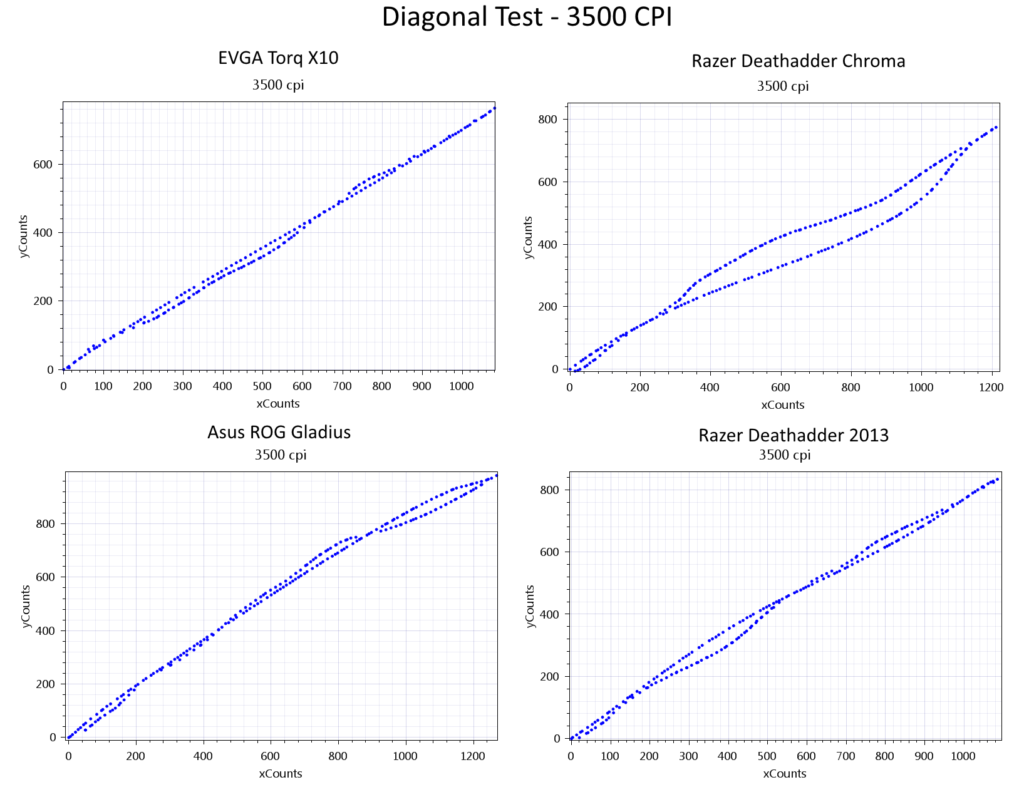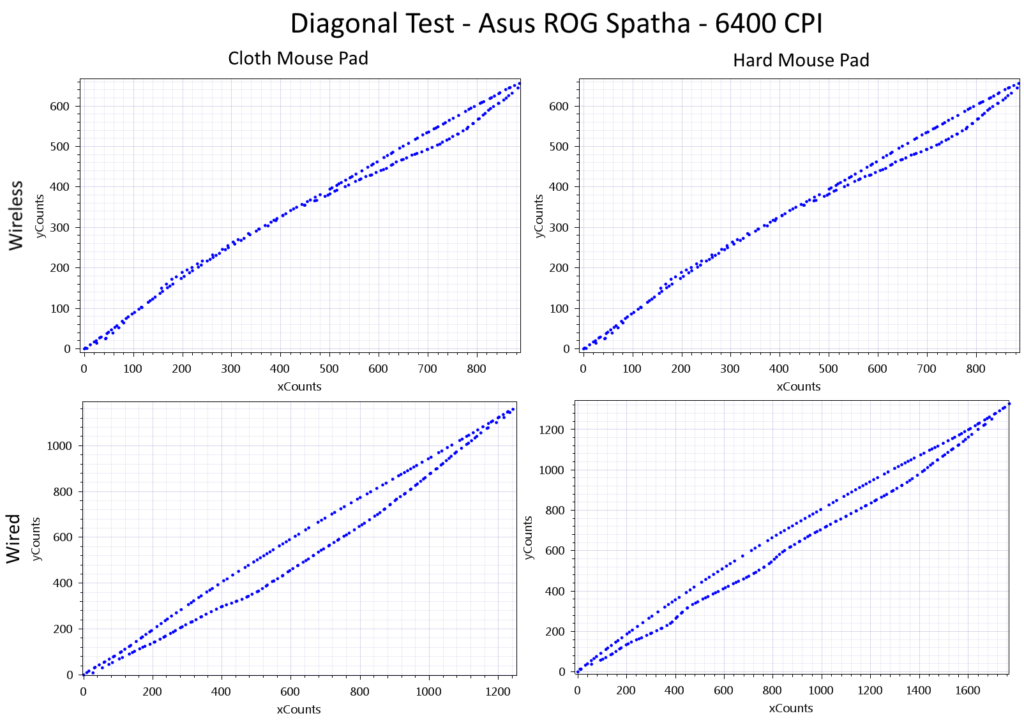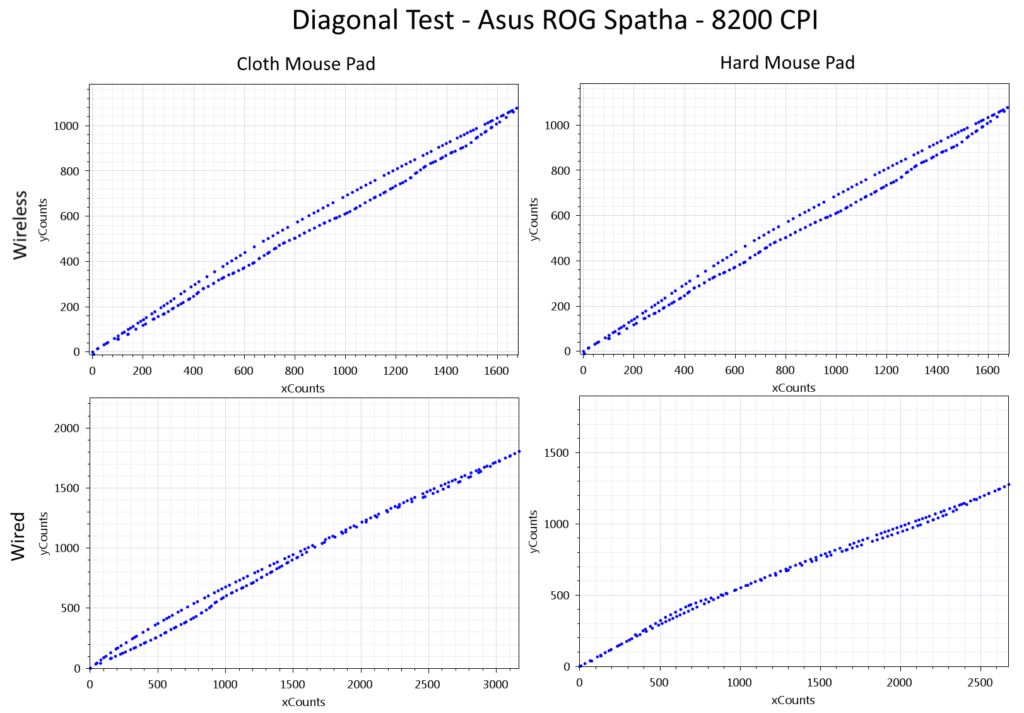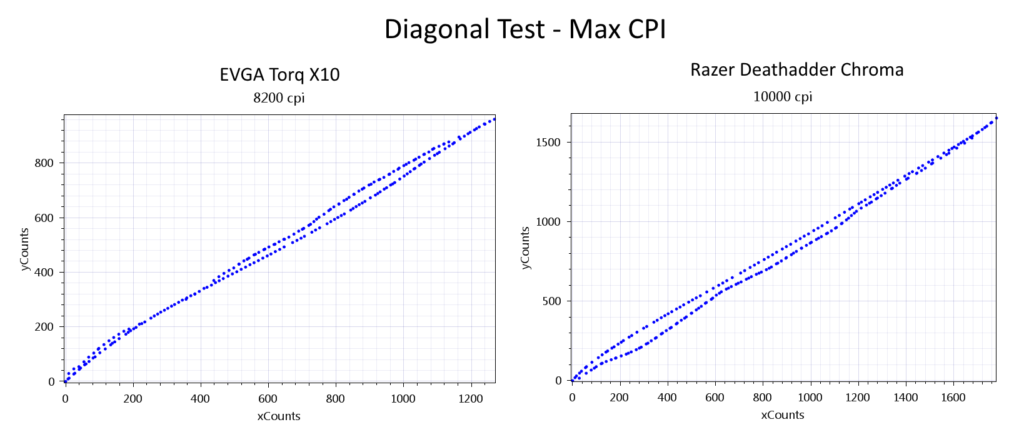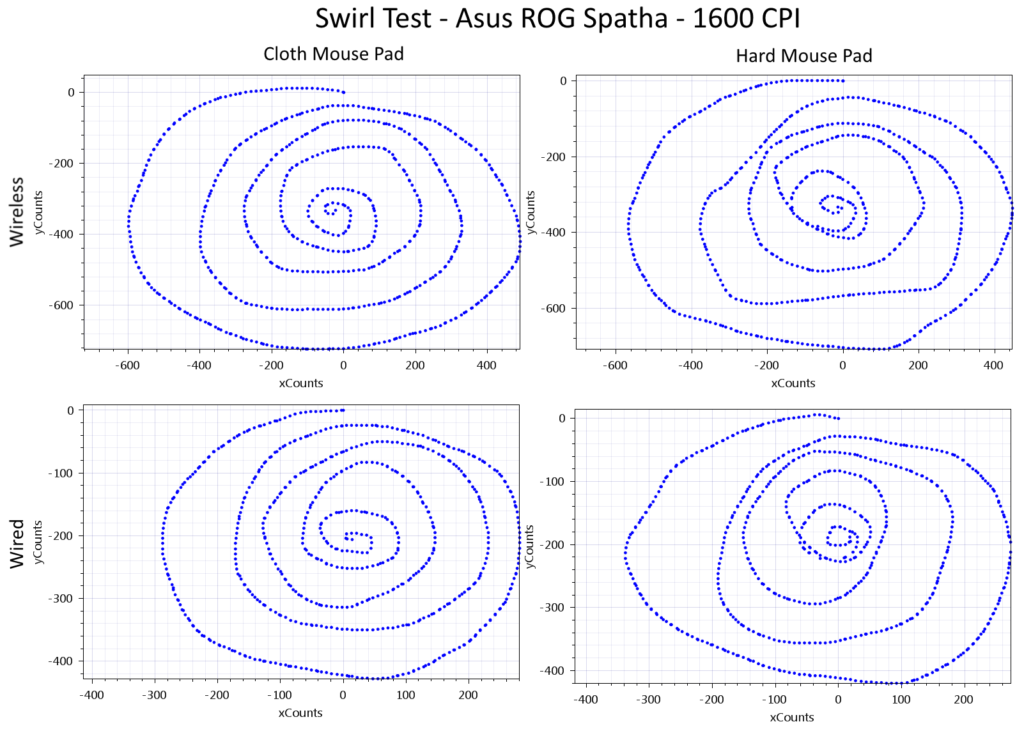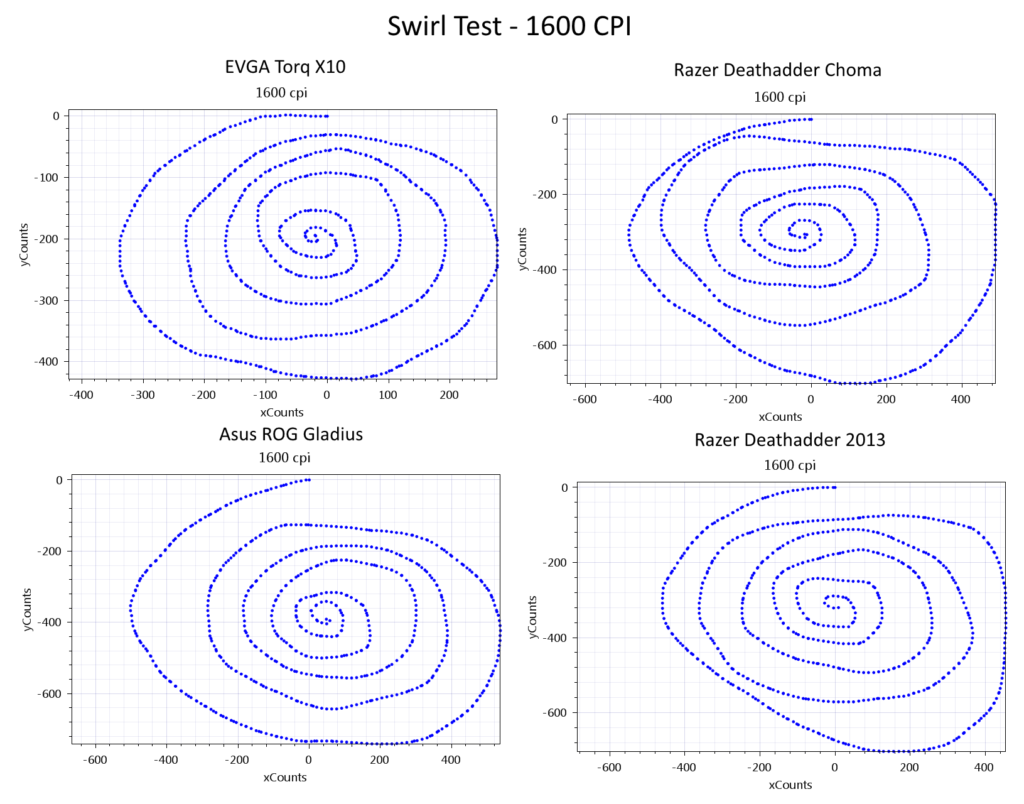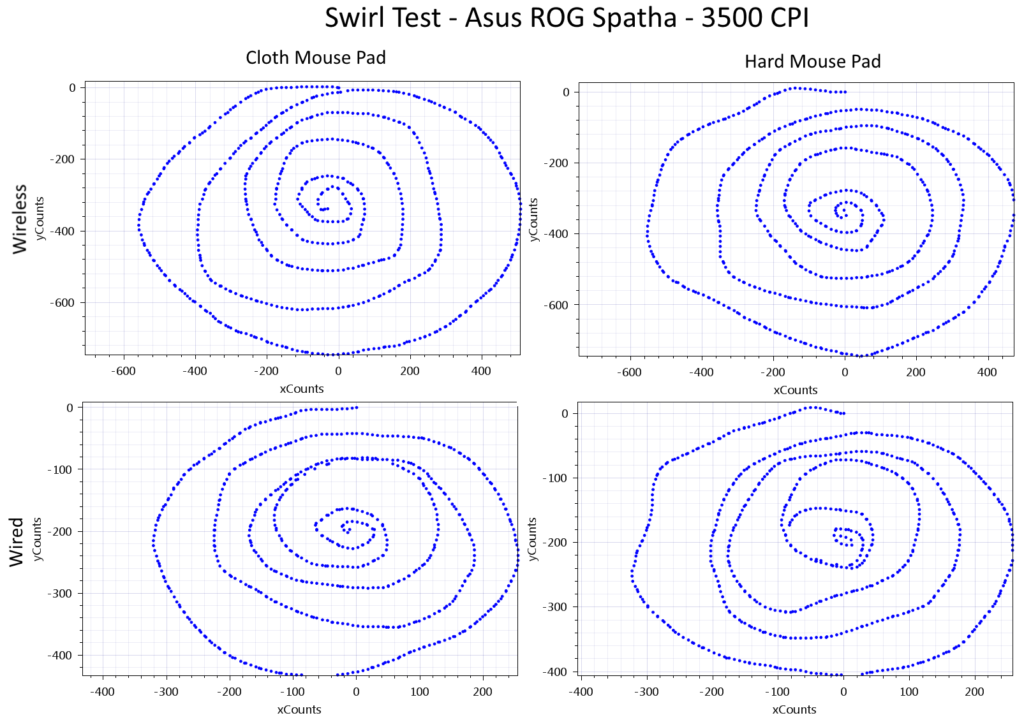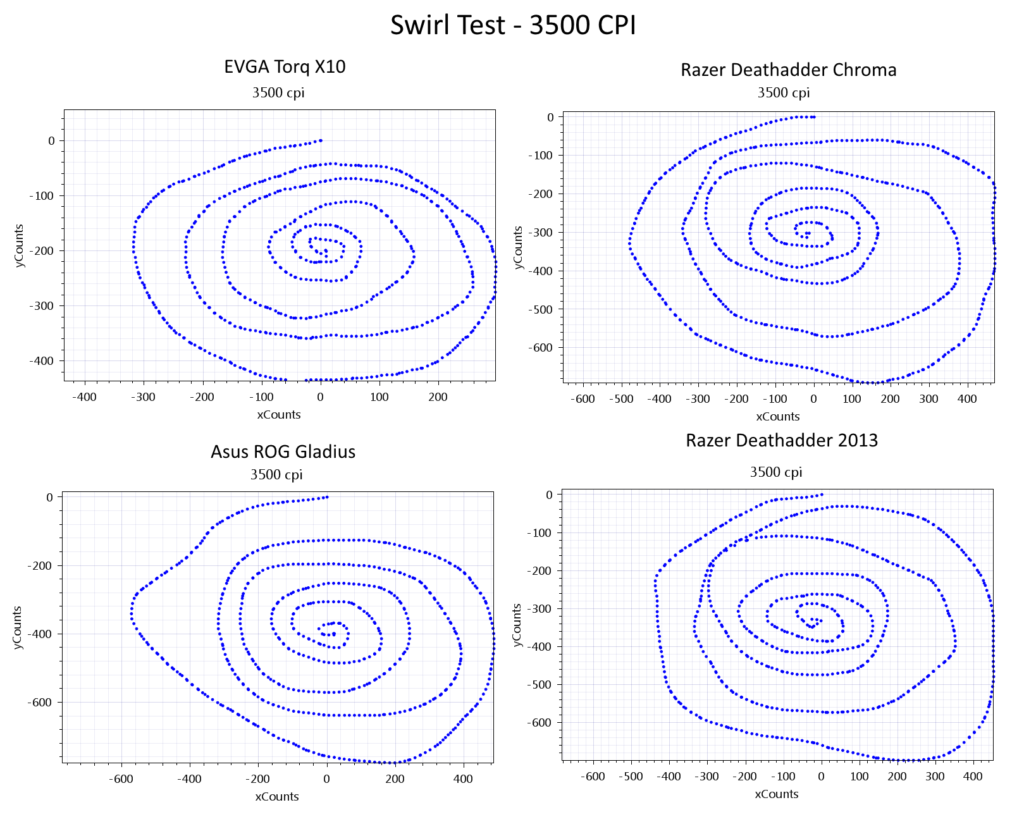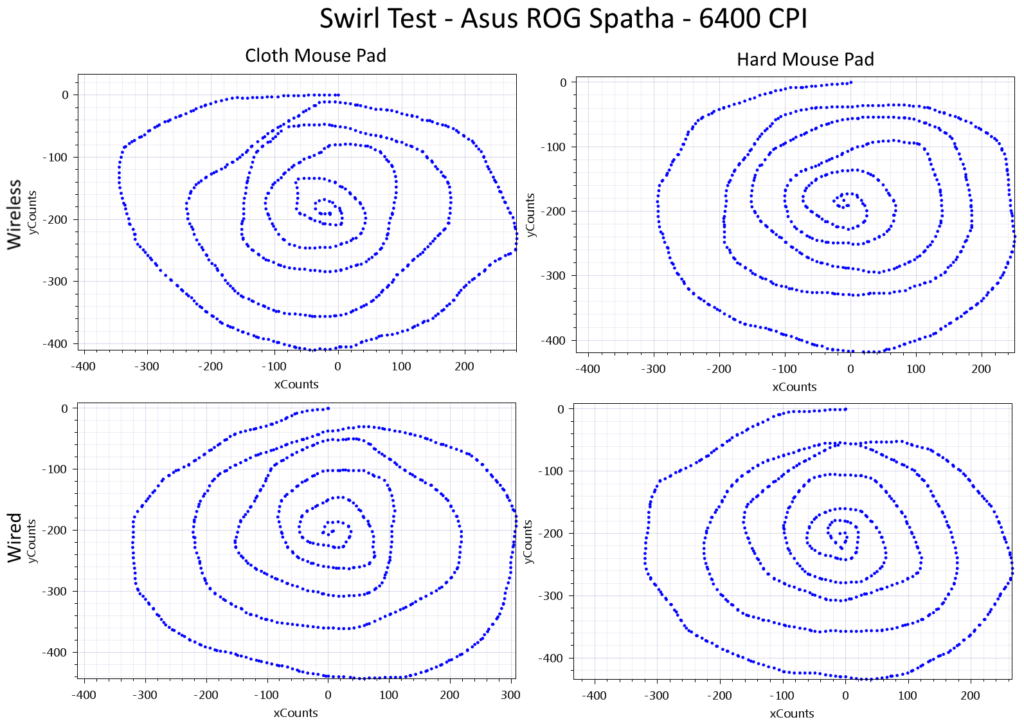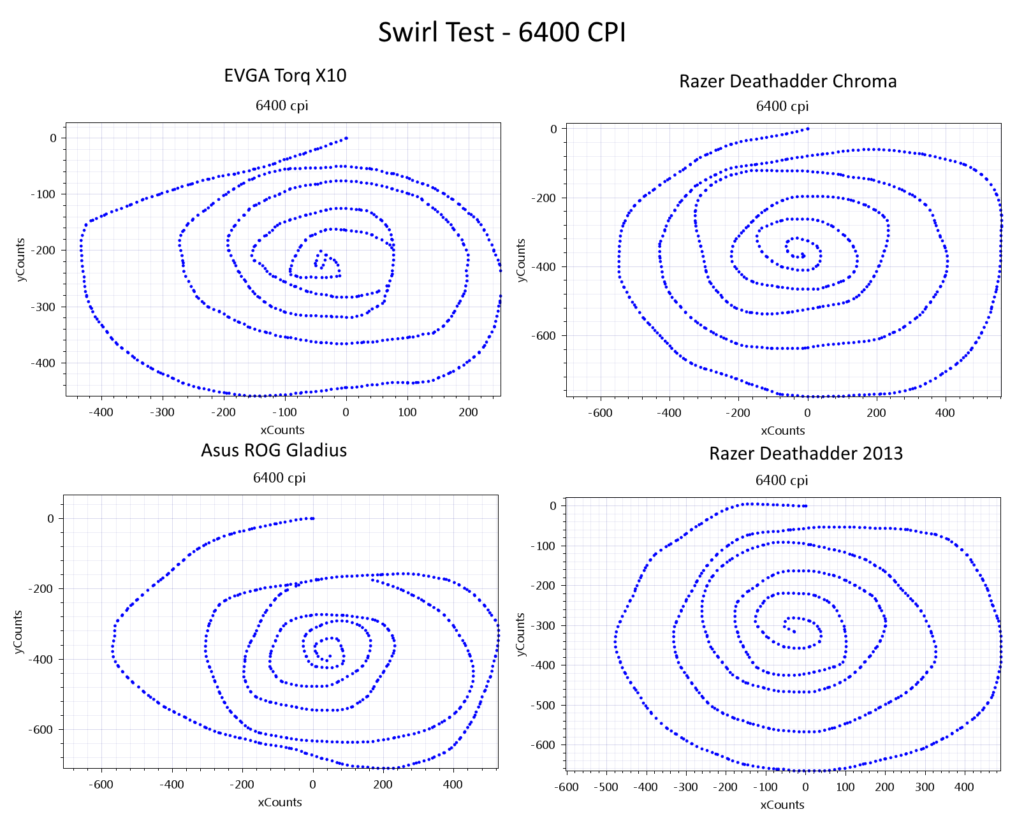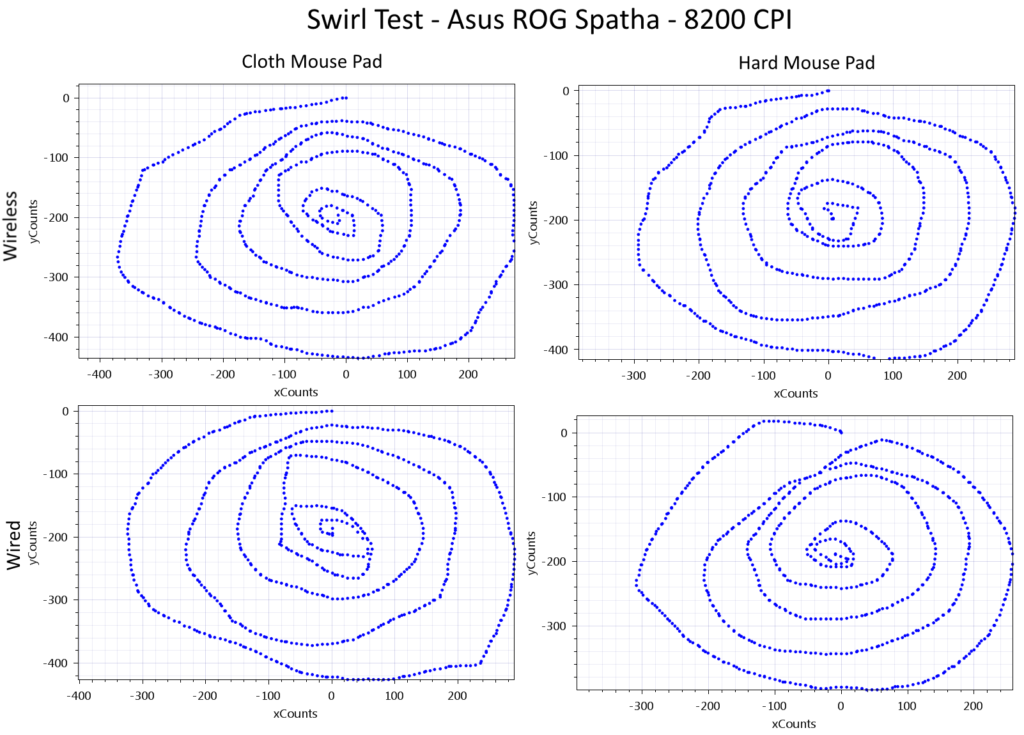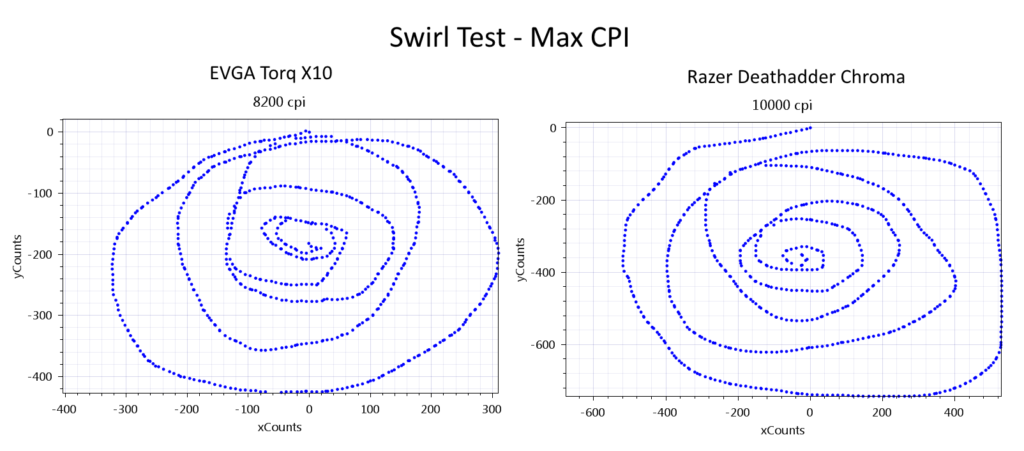Testing
Personal Bias
Mice have many features that are quite personal. Shape, weight, buttons and the sensor are the main concerns here. Let me first go ahead by stating my personal preferences. I like a large but lightweight mouse, with a high CPI optical sensor. I like a CPI switch, two thumb buttons and a scrollwheel. Any more buttons than that is overkill for me. I don’t need macro functionality or fancy LEDs. I don’t need 2000Hz polling and I don’t need wireless. So the Spatha is obviously not a mouse that is ideal for a user like myself, in fact the Gladius mouse was just about perfect for me. However added features don’t necessarily hurt anything as long as there is not a cost. So now we’ve listed our subjective biases, let’s now try and address the Spatha in an objective fashion and then move on to what we can actually test.
Mouse Ergonomics
Let’s first deal with the shape and the grip of the mouse and then move on to the buttons. The mouse is large and I like that. Even my long fingers can get around it, and my palm can actually partially rest on the arch rather than float an inch of so back like some smaller mice. I would go so far as to say that this mouse fits my hand the best out of any I’ve tried. However it’s not quite perfect which is not a surprise given that I’m hardly average sized. I’d prefer it just a touch bigger still. The rubber grips are nice, though I would like to see some on the fourth finger ‘valley” as well. Overall I think ROG hit it out of the park with the shape.
Button Ergonomics
One of the attractions of the Spatha is the number of thumb buttons. Some MOBA gamers really like to have a bunch of thumb buttons so that each assigned to an action or skill. The Spatha has six which is less than some (10 is not uncommon), but of course most mice have less. The design keeps one button in the center with 5 around it. However there is nothing on the center button to distinguish it by touch from the others. Take a look at your keyboard for example and you’ll most likely notice two marks on the F and J keys that enable a touch typist to feel that they are in the correct position. I would have liked to have something similar here.
In addition for my long thumbs, I found that my thumb was only really comfortable hitting the most forward of the two buttons. For those with average sized hands it may not be a problem however. This is confusing though because despite my large hands I never felt comfortable reaching for the two small buttons offset to the left of the main left mouse button. These were a waste to me, and I felt like a button for my fourth finger could have been more useful. Lastly I felt that the CPI switch was not so quick to use in the heat of battle. It’s subtle and while you will not accidentally press it, I still can’t imagine toggling it when sniping.
Overall I think the buttons and their layout could have been optimized better.
Battery Life
I work from home so I use a mouse all day. The fresh battery in the mouse after a full charge would last me about two days and would charge to 70% in an hour or two. This is considerably worse than a wireless mouse that is not designed for performance. For example my old Logitech wireless mouse from 2008 could last about 6 months on AAA batteries. A 2 day charge realistically means that you’ll want to charge the mouse every night. However while charging the mouse the cradle needed my laptop to be powered up as the base station takes it’s power from the USB port. This is a huge negative for those that shut their PC down when they are not using it because the mouse would never charge. It would have been nice to have separate power so that the mouse would always charge when it was cradled. This was resolved by using a powered USB hub so that the mouse could charge regardless of the PC. In addition it would have been nice if the battery was able to be changed without unscrewing the mouse.
Wireless Mode and Interference
I’m a fan of wires. I change my computer setup all the time and hiding my cables is something I’ve long given up on. When I plug in my work laptop, I need to plug in a USB hub, two display port cables, an ethernet cable, a usb thumb drive and a power cable. My desk naturally has a bunch of cables that would drive some other users nuts. I still use wired ethernet as much as possible because I find it simply more stable than wi-fi. I’m the kind of person that is OCD about connection uptime. In the past I’ve found wireless mice to often be intermittent. The benefit of not having a cable is of zero value to me, so I’ve always chosen to go wired when I can. In fact I was very surprised to see a high performance wireless mouse even existed. I’m quite glad that ROG included wired functionality though – at the least it solves any battery problems and at the most it solves interference issues. I was expecting the Spatha to have similar intermittent problems to previous mice I’d tried. However once paired and charged it was reliable as it could be. I honestly could not tell the difference between the wired and the wireless version with the exception that I would sometimes run out of charge on the battery.
However despite the exceptional wireless behavior of the Spatha – the question remains as to why?

A mouse that can last a long time on a charge or that takes disposable batteries then you truly are eliminating a wire. But the Spatha needs a permanently attached docking station that itself uses a wire. So you’re trading a mouse wire for a docking station wire. The advantage then is only twofold – if it allows you to hide the base station, or if you’re using the mouse from a distance.
Distance is most useful for those “couch gaming”. Some like to game on a big TV and still want to use a keyboard and mouse. There are products that only target this market – for example – Stieger Dynamics Couchmaster:

Or Corsair’s Lapdog:

In terms of acceptable distance, I found the mouse able to work even up to 20 ft away. That’s not to say it stopped at 21 ft, I just couldn’t test it any further. So it would be perfect if you need a wireless mouse that can be used from across the room.
Smoothness of Movement
While we will be testing this as best we can in the next section it’s important to also state how the mouse felt beyond real data. I found the mouse to be quite similar to EVGA’s Torx X10 mouse which is no surprise because they both use the same Avago 9800 sensor. The Torx was uncomfortable in the hand but lightweight. The Spatha was comfortable but the weight made it get “stuck” on a cloth mouse pad. I felt that the performance was much improved by using a metal mouse pad. However I vastly preferred the feel and performance of a lightweight optical mouse such as the Gladius or a Deathadder. I would frequently have my cursor overshoot in FPS games, and then struggle to make a small adjustment accurately. After being accustomed to light mice with less inertia and less static friction then it should not be a surprise that I struggled. I felt that my aim in FPS shooters definitely suffered. Perhaps this is something that your body gets used to though so it is hard to know whether this is a legitimate complaint or not. Suffice it to say in my few week’s of testing I never got comfortable with it.
Aesthetics
Everything made by ROG in the past few years has simply looked amazing. They’ve been setting the bar in design and attention to detail that has made others play catch up. The Spatha is no exception to that. It looks the business. The angled design reminds you of a F117A Nighthawk while the color scheme can be made to match any rig.

The thumb buttons mimic the ROG symbol and the design matches the rest of the product line perfectly. The way the base station matches the mouse is proof of great attention to detail.
The only disappointment is the plastic on the right side. It’s deliberately rough plastic to promote grip, however it picks up marks and scratches quite easily. I would rather use the same plastic from the top shell and add rubber where necessary (really on the spot for your ring finger).
USB Polling – Wired vs Wireless
Let’s take a look at the USB polling. 1000Hz (1ms) polling is pretty standard these days on a wired mouse, but the Spatha claims to do that wirelessly – let’s see if it holds up to testing:
First let’s compare wired vs wireless at 1000Hz by looking at the left column. Both average 1000Hz (1ms) nicely – however the wireless mode does have slightly more jitter with quite a few more outliers than the wired version. Clearly this is a good wireless mode, but wired is still marginally better.
Now the wired mode can even be turned up more to 2000Hz. However this doesn’t seem to really increase performance. Although the average is at 0.5ms as it should be, note that most data points are either at 0 or 1ms. This means either that our software is having trouble measuring below 1ms, or that the Spatha is really reporting 2 data points almost back to back and then having a 1ms gap between them. To me the 2000Hz mode therefore doesn’t seem to be living up to the intent of it’s claims even if it’s technically meeting the spec. However in my opinion this really doesn’t matter. 1ms polling isn’t exactly slow compared to the rest of the lag in the system. Here’s a good graph from an old Anandtech article showing the breakdown of an unoptimized example system’s total response time:

Here they show a mouse lag of 8ms. However we’re really talking about a mouse with a 1ms response time vs a claimed 0.5ms. I.E. approximately 0.5% of the entire system response time. Now even if you fine tuned your whole system and used a fast response monitor and cut the total time down to ~30ms you have to remember that the total lag also includes the human response time. In that same article Anand linked to a study showing humans have a ~200ms response time. In other words, while every little helps, 0.5ms is way down in the weeds in terms of a problem. If you think you really need 2000Hz in a mouse, you better be running the fastest display, caffeine and hardware to match.

Lastly if you scroll back up and compare apples to apples on the Spatha Wired 1000Hz vs the competition in the form of the latest Razer Deathadder we see that 1000Hz polling is almost identical for both.
Conclusion – 2000Hz wired polling isn’t really any better than 1000Hz. 1000Hz wired polling works great, and 1000Hz wireless polling, while slightly worse is plenty good enough.
Movement Testing – Circle Test
All of the movement tests are subject to error because the mouse is moved by a human. While a machine would be more accurate, the machine also won’t be affected in the same way by the effects of moving and static friction. Traditionally we’ve only tested the mice on a cloth pad (Razer Goliathus Control) – however after playing with EVGA’s Torx which is another 8200CPI laser mouse, we found that the laser sensor is just so much happier on a hard surface. So we will be testing two surfaces on the Spatha both in wired and wireless mode in order to be more fair. The hard surface is a metal mouse pad from In Win – similar to the batmat, but an older and more boring design.
The circle test involves continually drawing the same size circle again and again at a moderate pace. A good mouse will give a circle that is nice and tight and does not wander off. The curves should be smooth and show no angle snapping.
1600 CPI:
Movement with the cloth mouse pad seems to be smoother in general. The performance in general is acceptable and not significantly different to the competition:
3500 CPI:
While the wired data does look cleaner – this is hardly enough to state it uneqivocally. At 3500 CPI we see that both mouse pads are similar. Again performance is similar to the competition:
6400 CPI:
At 6400 CPI things seem less consistent, but are far from bad. There are some unusual kinks, but the cricles themselves are reasonably tight. The competition, and in particular the Torq with it’s identical laser sensor looks similar:
8200 CPI:
At higher CPI settings the hard mouse pad definitely felt more controlled than the cloth and this shows here in the results. However even the hard mouse pad at times showed some interesting shapes that were less smooth and less circular than we’d like. Only two of the mice tested go above 6400CPI – the Deathadder Chroma was tested here at 10000 CPI and not 8200 CPI. While both the Torq and the deathadder look similar at first glance, the actual curves are more smooth and gradual, while the Spatha is a bit more lumpy.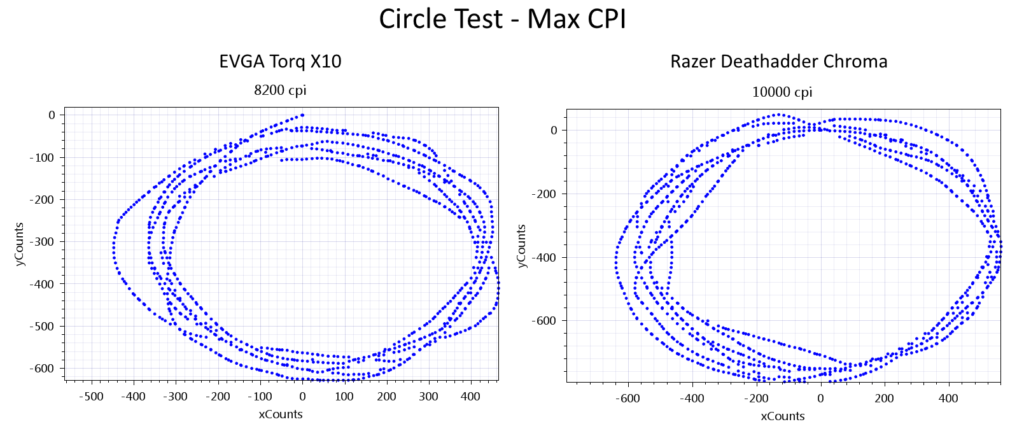
The circle test appears to have shown that higher CPI settings favor a hard mouse pad. The test also shows no drift or acceleration issues. The test also shows that the Spatha’s performance seemed a bit more sticky leading to lumpier curves.
Diagonal Test
The diagonal test involves moving the mouse from bottom left to upper right quickly. Then returning to the origin slowly. This shows any acceleration issues if they exist as well as giving an impression as to how easy it is to move the mouse in one direction both quickly and slowly.
1600 CPI:
There are no acceleration issues here and linearity is pretty good. Results are similar to the competition:
3500 CPI:
Results at 3500 CPI are still good though linearity is definitely less. All of this is within the margin of error though. The competition again looks similar:
6400 CPI:
Nothing new here. Nor with the competition: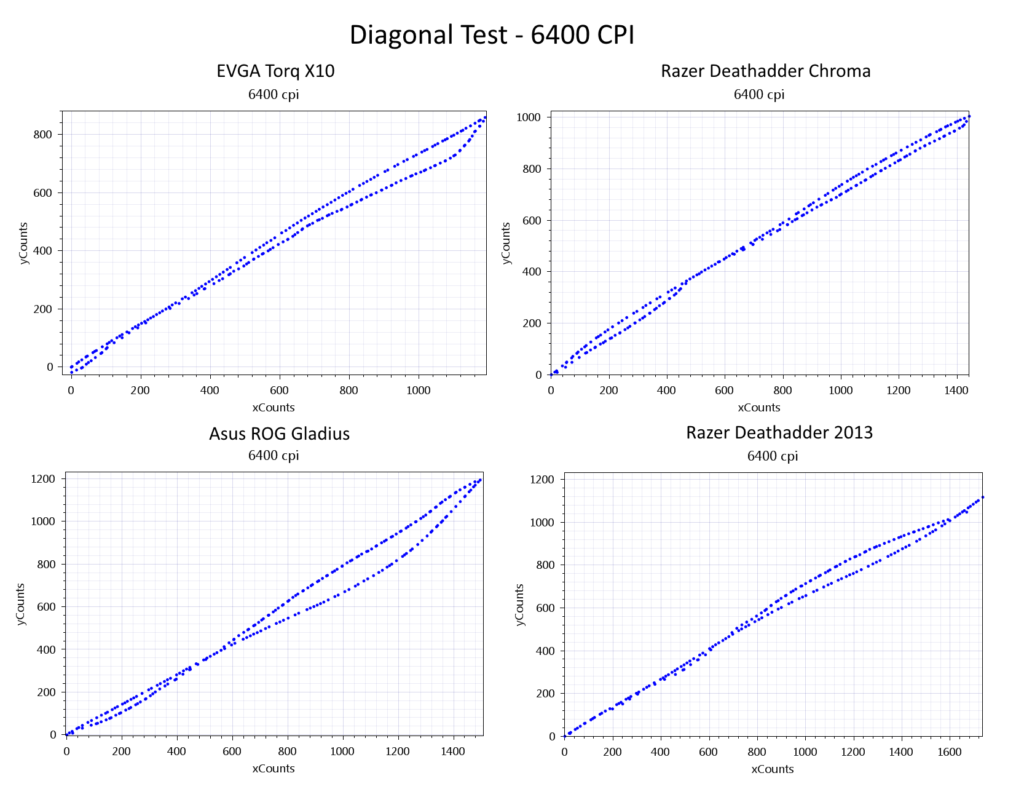
8200 CPI:
Nothing new here. Nor with the competition:
In summary the diagonal test showed that there were no acceleration issues with the Spatha, but nothing beyond that.
Swirl Test
The swirl test is perhaps the most interesting. Here we follow a spiral pattern. This really shows the accuracy of movement when speed and curvature is varied. Again let’s start off with low CPI:
1600 CPI:
The Spatha might favor a hard mat for high CPI settings, but here it definitely favors the cloth mouse pad. Cloth results are similar to the competition:
3500 CPI
At 3500 CPI the Spatha is definitely looking worse although the cloth mouse pad still seems more controlled. Earlier we had mentioned that the wired plots sometimes look better. Here is some evidence to refute that is anything more than a statistical anomaly. On average the competition looks similar when comparing only the cloth mat data:
6400 CPI:
At 6400 CPI we see the cloth mouse pad starts to look worse. The competition doesn’t also seems to start struggling. Again thought the Spatha’s data is a bit more lumpy even if the overall accuracy looks simlar.
8200 CPI:
At 8200 CPI things are definitely looking uglier, particularly with the cloth pad. However this is a tough test for the other mice too and it’s not easy to pick a winner here.
In summary the Swirl Test showed the Spatha transitioning from better performance with a cloth pad to better performance with a hard pad at higher CPI settings. The results were often not very clean, but because they weren’t substantially worse than the competition it’s hard to read much into it. In fact this quite a surprise to me as I very much expected the Spatha to have far poorer results given how uncontrolled it felt while I used it. The best indication of this is the “lumpiness” of the curves. This is due to the combination of the mouse weight and the mouse feet friction with the pad. The mouse had a tendency to stop and start rather than continuously gliding. This causes small errors that look like lumps in the tracks, but because I’ve corrected for the error with my hand the error gets averaged into the rest and so the resultant plot doesn’t look as bad as the mouse feels.







